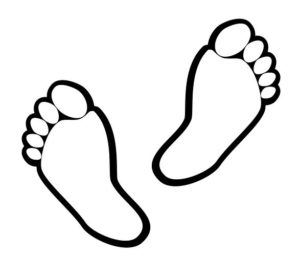 Plantar Fasciitis Treatment For Heel Pain
Plantar Fasciitis Treatment For Heel Pain
WHAT IS PLANTAR FASCIITIS?
Plantar fasciitis or jogger’s heel pain causes pain in the bottom of the heel or the arch of the foot. Symptoms are typically sharp, stabbing pain in the sole of the foot or heel with pressure, or when standing after periods of rest. Plantar fasciitis is most common in runners, people who are overweight, in occupations requiring prolonged standing or walking, and those with foot alignment issues or who have one leg longer than the other.1
The plantar fascia is a thick, ligament that connects your heel to the ball of your foot. This ligament experiences a lot of wear and tear in your daily activities such as standing, walking and running. These ligaments act as shock absorbers by maintaining the arch of the feet. Too much pressure or impacts on your feet can damage or tear the ligaments, leading to the plantar fascia inflammation that causes stabbing or burning pain. Often, a little bony growth (called a heel spur) also develops on the heel bone.
HOW TO TREAT PLANTAR FASCIITIS
Acupuncture for Plantar Fasciitis: The Clinical Evidence
Acupuncture is a proven and effective therapeutic method for the elimination of plantar fasciitis symptoms. Traditional Chinese Medicine (TCM) and acupuncture treatments significantly decrease pain and swelling and reduce relapses of symptoms. A recent study confirmed acupuncture plantar fasciitis relief. Researchers concluded that acupuncture and TCM treatments achieved a total treatment effective rate of 91.8%.2 Acupuncture has proven and long track records for significant positive outcome rates for patients with plantar fasciitis.
Accordingly, the US Department of Veteran Affairs and the Acupuncture Evidence Project concluded that acupuncture has a potentially positive effect for treating heel pain.3, 4
The acupuncture and TCM treatments achieved a total treatment effective rate of 91.8%.2
Myofascial Release Technique
Repetitive injuries or joint dysfunction can cause tough, adhesive, dense scar tissue in the affected area. As scar tissue builds up, muscles become shorter and weaker, inflammation on tendons causes tendonitis, and nerves can become trapped. This can limit the range of motion, loss of strength, and pain.
At Golden Acupuncture & Chiropractic, we treat myofascial pain syndrome (muscles, tendons, and ligaments) for muscle and joint dysfunction. Our chiropractor evaluates the tightness and movement of muscles, fascia, tendons, ligaments, and nerves of the foot and surrounding structures. Dysfunctional connective tissues are treated with a combination of precisely directed pressure with specific movements. This release technique effectively treats the problem areas and underlying causes of foot pain.
How to Treat Plantar Fasciitis at Home
If you have a foot or heel pain, you can try home remedies to relieve pain initially. Some of the helpful home remedies include changing your activity levels, applying ice, stretching, wearing orthotics, weight loss and taking over-the-counter medication. If symptoms do not improve within several weeks, your foot doctor may recommend conventional therapy or diagnostic imaging.
Conventional Podiatrist (Foot Doctor) Approach to Plantar Fasciitis
Conventional podiatrist treatments include pain medication, steroid injections, anterior night splinting, shock wave therapy, and custom orthotics.
- Rest: Decrease or avoid the activities that worsen the pain.
- Ice: Apply ice pack over the painful area at least twice a day for 10 to 15 minutes, for the first few days.
- Foot massage may be one of the least effective of the common therapies for plantar fasciitis.
- Night splints to stretch the plantar fascia.
- Custom arch support shoe inserts may not be enough for acute plantar fasciitis pain.
- Medications: Your podiatrist may prescribe non-steroidal anti-inflammatory drugs (NSAIDs) to reduce your pain and inflammation. Corticosteroids can be injected directly into the heel.
- Extracorporeal shock wave therapy: During this procedure, sound waves are targeted on to the painful area, and it is reported to be beneficial, however, it can be painful and lead to numbness and swelling in the area applied.
- Surgery
Conventional therapy may be usually effective but it is far from efficient and can take months or years to relieve symptoms. Family doctors are not prepared to treat plantar fasciitis. But even podiatrists may not be a great choice either because they are mostly focused on surgical procedures.
Conversely, studies on acupuncture for plantar fasciitis have shown few to no adverse effects, in addition to overall high levels of effectiveness.
DON’T LET FOOT PAIN SLOW YOU DOWN
If you ignore plantar fasciitis, you may develop chronic heel pain that hinders your regular activities. Heel pain or foot pain can change the way you walk to minimize plantar fasciitis pain. This compensation can change the biomechanics of your body, and you may develop Achilles tendonitis, shin splints, frequent ankle sprains, foot injuries, and other problems in your knee, hip or back.
Breaking the injury cycle requires a comprehensive approach, examining critical elements such as postural alignment, biomechanics, musculoskeletal balance, and proper shoes for plantar fasciitis. We offer gentle yet effective treatments. We use extremely thin needles, and it is virtually painless. Patients report the treatment itself is relaxing.
Don’t let plantar fasciitis pain slow you down. Call Today to schedule an appointment and learn more about Golden Acupuncture & Chiropractic treatment.
References
- Goff JD, Crawford R. Diagnosis and treatment of plantar fasciitis. Am Fam Physician. 2011;84(6):676-682.
- Acupuncture Plantar Fasciitis Relief Confirmed, published by HealthCMi. 2017
- Hempel, S., Taylor, S. L., Solloway, M. R., Miake-Lye, I. M., Beroes, J. M., Shanman, R., et al. (2014). Evidence Map of Acupuncture. Washington (DC): Department of Veterans Affairs.
- McDonald, J. L., & Janz, S. (2017). The Acupuncture Evidence Project, 1–81. www.acupuncture.org.au






